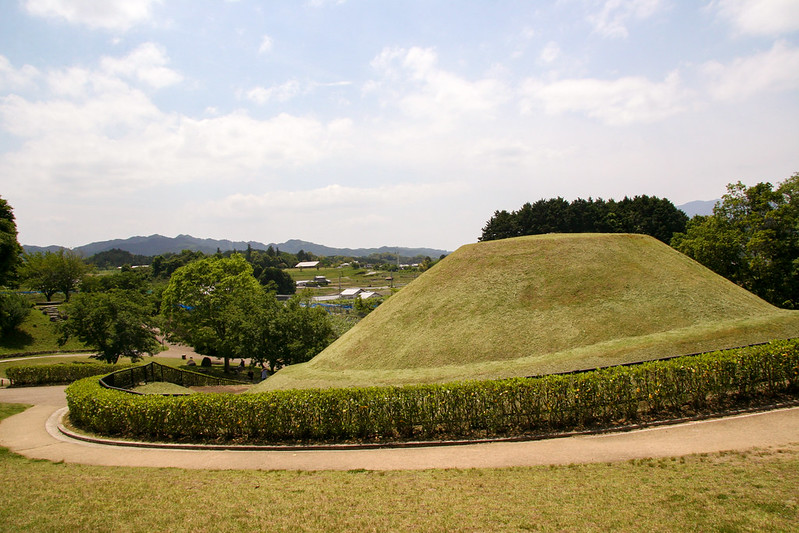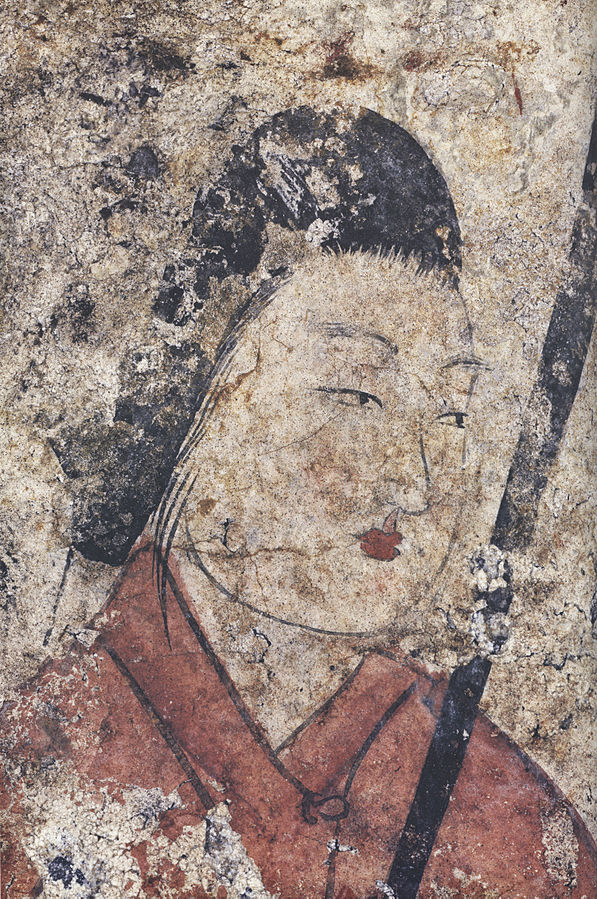
The Mystery of the Takamatsuzuka Tomb
Several ancient burial mounds exist in and near Asuka Historical National Government Park in Japan. The Takamatsuzuka Tomb (高松塚古墳), also known as the “Tall Pine Tree Ancient Burial Mound”, is one of the kofuns (tombs) in Akusa village, Nara prefecture.
A farmer rediscovered the Takamatsuzuka Kofun in the early 1970s, and it wasn’t long before the Kashihara Archeologigal Institute did further excavations and unearthed a crypt. The mound of the tomb was built with layers of sand and clay, 16 meters in diameter and 5 meters high. What makes the kofun a rarity and counted as one of Japan’s national treasures, are the colored murals painted on the walls of the burial chamber.
Mural from Takamatsuzuka Tomb, Asuka period, 7th century.
The paintings were done in full color of courtiers dressed in Goguryeo-style (37 BCE – 668 CE), a common garb worn in one of the Ancient Three Kingdoms of Korea. The murals bore the colors of red, gold, silver and blue foil said to represent male and female figures as well as the constellations known as the White Tiger, Vermillion Bird, Azure Dragon, and Black Tortoise.
The burial ground and stone chamber is at the center of a mound. It holds a sarcophagus that opens to the south. The walls, floor, and ceiling inside the tomb are coated with plaster, and the murals are painted on the east, west, and north walls and the ceiling. A three-meter wide passage from the center of the burial mound leads to the outside. Five meters from the stone walls and passageway is a square stone altar that initially inspired the entire excavation.
Wall painting from the Takamatsuzuka Tumulus, Asuka, Nara, Japan.
The enormous work and artistry that went into the building and creation of the Takamatsuzuka Tomb indicate that it was built for the Japanese royal family or a high-ranking nobleman. But still today, for whom it was built is still unknown for it lies empty and remains a mystery except for the beautiful murals that decorate its walls and ceiling. Some say the tomb may have been built for some popular historical Japanese figures such as Prince Osakabe or Prince Takechi, sons of Emperor Temmu, Isonokami Ason Maro, the head of the Fujiwara-kyo and descendant of the Mononobe clan (clan opposed to the spread of Buddhism in Japan) or Kudara no Konikishi Zenko, the son of the last king of Baekje (one of the Three Kingdoms of Korea).
